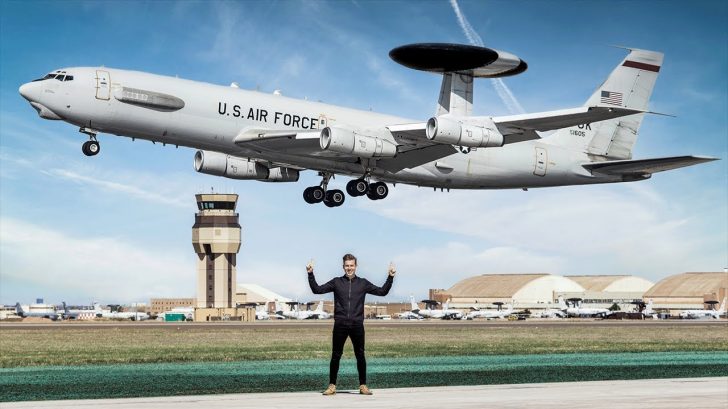Nothing comes close to providing as much battlefield capability as the E-3 Sentry, commonly known as the AWACS. Here are ten facts about the Air Force’s eye in the sky.
- Acts like a flying control tower
As an Airborne Warning and Control System, the E-3 helps identify enemies and friendlies on a battlefield. Instead of being fixed on the ground, the AWAC takes that capability to the sky – utilizing its rotating radar dome to detect everything in its path.
- Came from a modified airliner
The E-3 is a modified Boeing 707, and the Air Force still uses the original fuselage and engines. For reference, the last 707 passenger flight by a US airline took place in 1983.
- Tried and tested in battle
Throughout the years, the E-3 has been a serviceable aircraft used by both the US Air Force and NATO Alliance Forces. During its service, the E-3 was the eye in the sky, providing threat detection and coordination from above.
- Has a massive radar on the back
This 30-ft radar can detect targets from sea level up to the stratosphere while providing a 360-degree radar picture that the E-3 can send to allied fighter jets, ships, or nearby control centers. Ground crews can enter the dome through a hatch to perform maintenance.
- Crews use “Viking Suits” in wet environments
Viking suits are kept on board during missions over water or in an Arctic environment to provide protection during emergencies. Should the aircraft go down, the suits keep them warm and easy to spot thanks to the suit’s bright orange color.
- Can fit 39 people on board
The Sentry is able to accommodate 39 people and typically flies with at least twenty crew members operating different stations during missions. Flight crews are composed of four individuals: the aircraft commander, pilot, navigator, and flight engineer – while the rest are for 13 to 19 “mission crews.”
- Powered by the same engine the B-52 uses
A TF33 turbofan engine is a dual spool, high bypass, axial flow engine with sixteen stages of compression. The E-3 has four of these, each capable of producing up to 21,000 lbs of thrust. Interestingly, the E-3 shares the same engine as the B-52, just with a different sub-model.
- Surprisingly spacious inside
There’s a lavatory at the back, a coat rack for cold days, bunk beds for very long sorties, and even an oven for when the crew gets hungry. Though it doesn’t outright help in the battlefield, it does tremendous work in keeping morale up.
- Technology in the E-3 has remained relatively unchanged since the 1970s
An airborne radar technician maintains and monitors the Sentry’s radar system. The ARTs use consoles to interact with the radar and observe the system. Despite its age, it’s still quite capable. If it ain’t broke, don’t fix it!
- Can fly for 11 hours straight
The fuel tanks on the wings have a capacity of 90,500L, giving the E-3 an operational range of 5,750 mi. If they were to run out of fuel, the Sentry could opt to refuel via air-to-air refueling.



